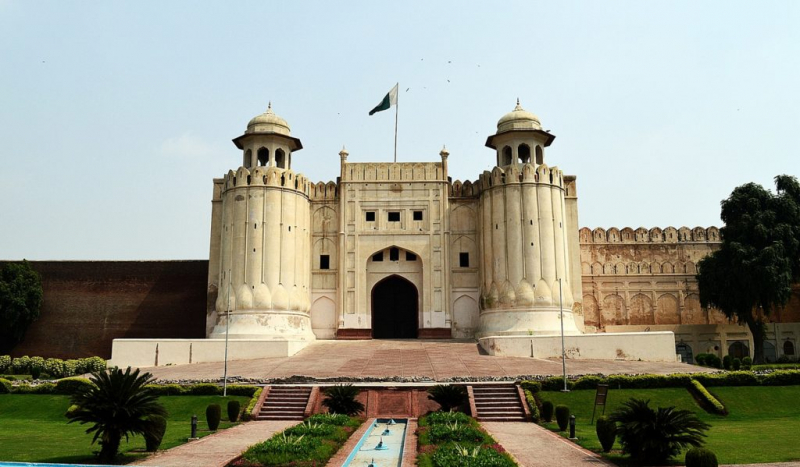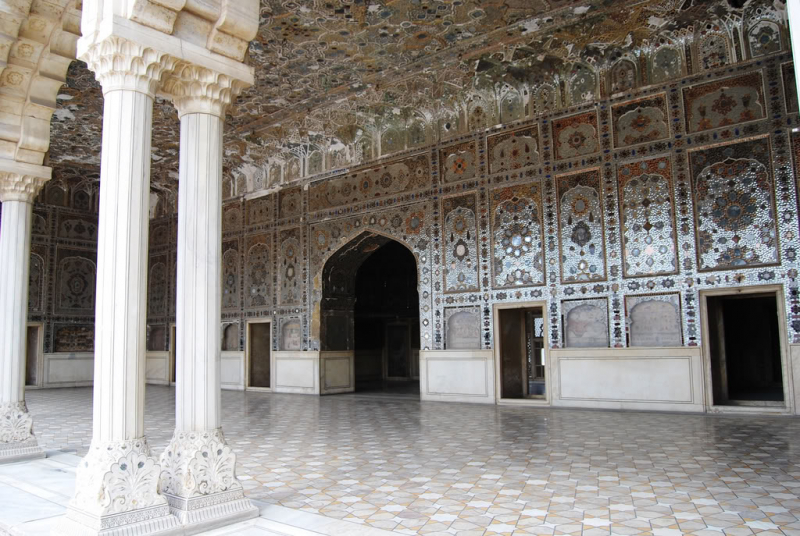Lahore Fort
The Lahore Fort is a fortress in the Pakistani city of Lahore. The fort is positioned at the northern extremity of Lahore's walled city and covers an area of more than 20 hectares. It is home to 21 significant monuments, some of which date back to the reign of Emperor Akbar. The Lahore Fort is famous for being virtually fully rebuilt in the 17th century, at the height of the Mughal Empire's magnificence and opulence.
Though the Lahore Fort site has been occupied for millennia, the oldest trace of a fortified construction there was an 11th-century mud-brick fort. The present Lahore Fort was built in 1566 during the time of Emperor Akbar, who favored a syncretic architectural style that combined Islamic and Hindu features. The Shah Jahan period additions are distinguished by exquisite marble with inlaid Persian floral decorations, while the fort's grand and famous Alamgiri Gate was built by Aurangzeb, the last of the great Mughal Emperors, and confronts the renowned Badshahi Mosque.
After the Mughal Empire fell, Lahore Fort became the palace of Emperor Ranjit Singh, the founder of the Sikh Empire. The Sikhs made various improvements to the fort. After the East India Company seized Punjab following their victory against the Sikhs at the Battle of Gujrat in February 1849, it passed to their hands. The fort was designated a UNESCO World Heritage Site in 1981 for its "outstanding repertoire" of Mughal architecture from the era when the empire was at its creative and aesthetic pinnacle.
Location: Lahore, Pakistan












